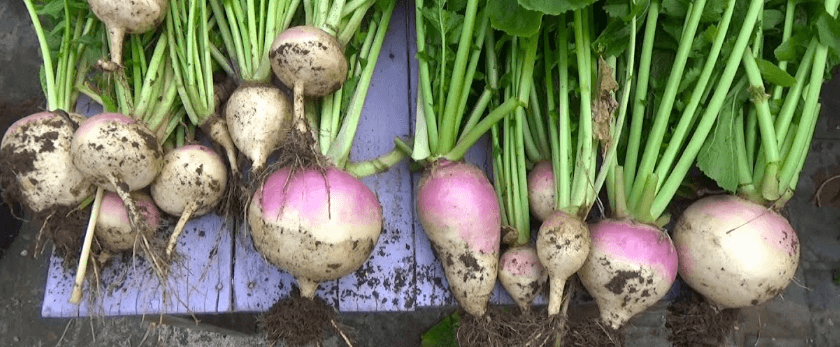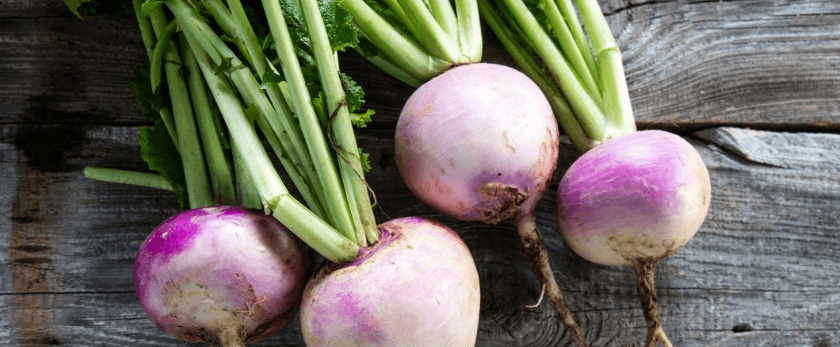Are you looking to add some nutritious and delicious vegetables to your garden? Look no further than turnips! These root vegetables are easy to grow, packed with vitamins and minerals, and can be used in a variety of dishes. Plus, growing your own turnips is a great way to reduce your carbon footprint and promote sustainable living. In this article, we'll cover everything you need to know about growing turnips, from caring for them to common problems and the best time to grow them.
How to Care for Turnips
Watering
Turnips require consistent moisture to grow properly. Keep the soil evenly moist, but not waterlogged. Water deeply once a week, or more frequently during hot and dry weather. Avoid overhead watering, as this can lead to fungal diseases. Instead, water at the base of the plant to keep the leaves dry.
Light
Turnips prefer full sun, but can also tolerate partial shade. Make sure they receive at least 6 hours of sunlight per day. If you're growing turnips in containers, make sure to place them in a sunny spot.
Soil
Turnips grow best in well-drained, fertile soil with a pH between 6.0 and 7.0. If your soil is too acidic, add lime to raise the pH. If it's too alkaline, add sulfur to lower the pH. Turnips also prefer loose, loamy soil that is rich in organic matter. If your soil is heavy and compacted, add compost or aged manure to improve its texture.
Fertilizer
Turnips are heavy feeders and require regular fertilization to grow well. Before planting, mix in a balanced fertilizer, such as 10-10-10, into the soil. Once the plants have established, side-dress them with a nitrogen-rich fertilizer, such as blood meal or fish emulsion, every 3-4 weeks. Be careful not to over-fertilize, as this can lead to excessive leaf growth and small, woody roots.

Pruning
Turnips don't require much pruning, but it's important to thin them out to give each plant enough space to grow. When the plants are about 3 inches tall, thin them to 3-4 inches apart. This will allow the roots to develop properly. You can also remove any damaged or diseased leaves to promote healthy growth.
What is the Best Time to Grow Turnips?
Turnips are a cool-season crop and can be grown in both spring and fall. For spring planting, sow the seeds as soon as the soil can be worked, about 4-6 weeks before the last frost date. For fall planting, sow the seeds in late summer, about 6-8 weeks before the first frost date. Turnips can also be grown in the winter in mild climates.
Common Problems with Turnips
Pests
Turnips are relatively pest-resistant, but they can still be affected by a few common pests. Flea beetles, aphids, and cabbage worms can all damage turnip plants. To prevent these pests, cover the plants with row covers or use organic insecticides. You can also attract beneficial insects, such as ladybugs and lacewings, to your garden to help control pest populations.
Diseases
Turnips can also be susceptible to fungal diseases, such as powdery mildew and clubroot. To prevent these diseases, make sure to plant turnips in well-drained soil and avoid overhead watering. If you notice any signs of disease, remove and destroy the affected plants to prevent the spread.
Bolting
Bolting is when the plant produces a flower stalk prematurely, before the roots have fully developed. This can happen if the plant is stressed, such as from high temperatures or lack of water. To prevent bolting, make sure to keep the soil consistently moist and provide shade during hot weather.
Sustainable Disposal Methods for Turnip Waste
When harvesting turnips, it's important to dispose of any waste in a sustainable manner. Here are a few ways to do so:
- Composting: Turnip greens and other plant waste can be added to a compost pile to create nutrient-rich soil for your garden.
- Animal feed: If you have chickens or other livestock, you can feed them turnip greens and other plant waste.
- Donate to a food bank: If you have an abundance of turnips, consider donating them to a local food bank or community kitchen.
- Use as mulch: Turnip greens can also be used as mulch to help retain moisture and suppress weeds in your garden.
Conclusion
Growing turnips is a great way to add some variety to your garden while promoting sustainable living. By following these tips for caring for turnips, choosing the best time to grow them, and properly disposing of waste, you can enjoy a bountiful harvest of these nutritious and eco-friendly vegetables. So why not give turnips a try in your garden this season? Your taste buds and the planet will thank you.










